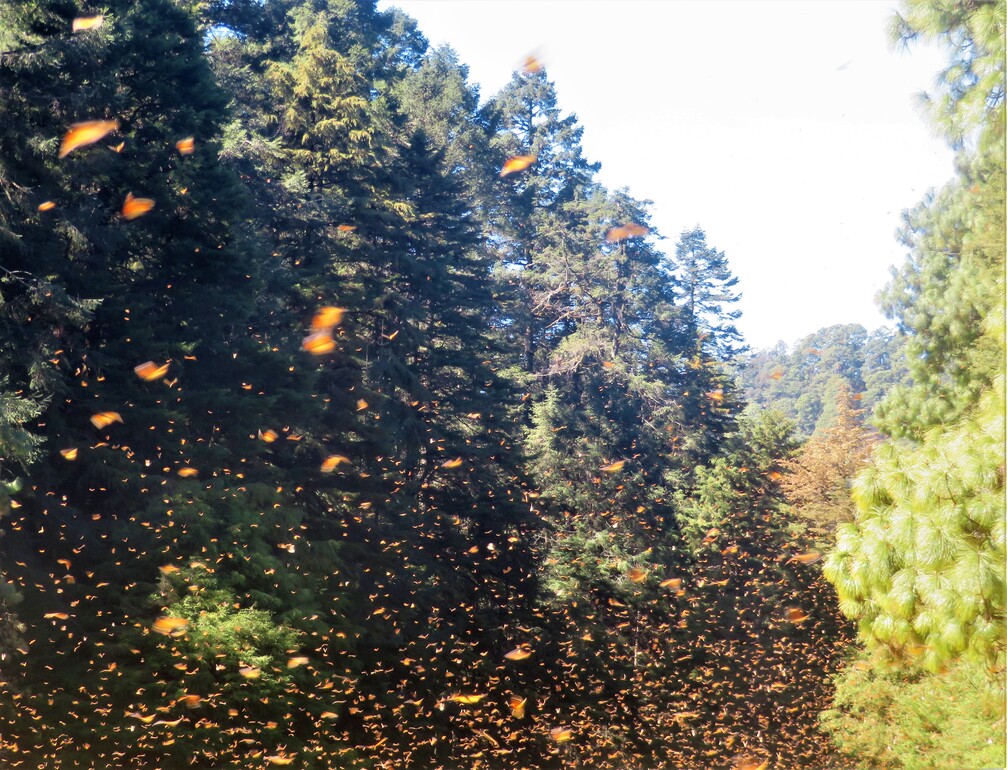 Español
Español
September 8, 2024
by Ellen Sharp, text and photos
My neighbor in Colonia San Rafael had a bricked-in patch of soil outside his door, home to a towering bougainvillea and a straggly clump of tropical milkweed. Although I'd recently renounced my role as a monarch butterfly advocate, the sight of this out-of-place Asclepias curassavica made me want to weep.
The well-munched milkweed meant that a monarch butterfly had laid her eggs there. The caterpillars that hatched devoured their host before transforming themselves into members of San Miguel's sedentary monarch population. Instead of flying on to the sanctuaries 200 km south of us, more butterflies had been pulled from the ranks of the magnificent monarch migration.
Ten years earlier, I'd gone to see their overwintering colony on Cerro Pelón in the State of Mexico. I was in the middle of a divorce and slogging through a dissertation about the awful things people did to other people when awful things had been done to them. I was in a dark place when I lay back on the ground underneath a stand of fir trees covered with what appeared to be dead deciduous leaves. The colony appeared underwhelming and I felt a familiar prickle of disappointment.
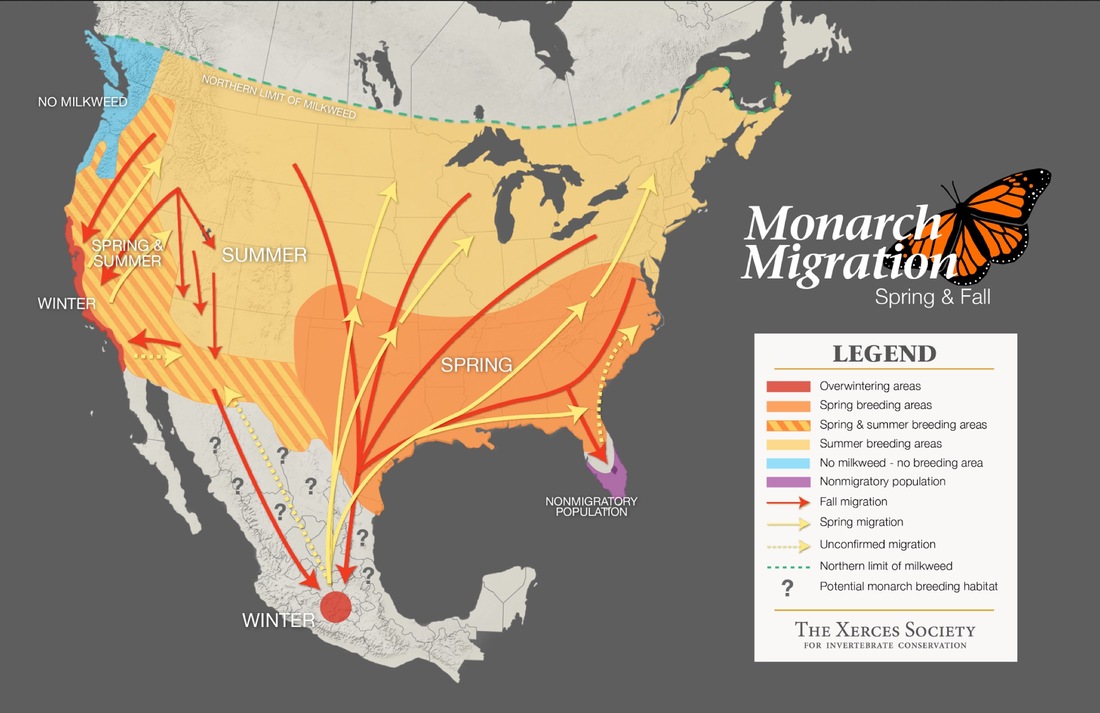
Then the sun peeked out from the clouds and warmed the branches. The "dead leaves" blinked open, flashing orange wings. After a few more minutes of sunlight, the monarchs toppled forth, streaming all around us, dodging our faces just a split second before collision. The air filled with a sound like running water. It took me a moment to realize that the thrum that I felt entering my heart came from the vibration of their wing claps. All my life I'd felt so alone, but right there in the middle of a kaleidoscope of monarch butterflies, I felt connected to everyone and everything.
I'd crossed a threshold, one that stood on the brink of a benevolent universe. I wanted to live there for the rest of my life. For the next decade, I tried. Once I finished my dissertation, I moved to the entry of the Cerro Pelón sanctuary, where I lived with my butterfly guide who'd since become my partner. I threw myself into building an ecotourism business and a forest conservation non-profit with him.
I was driven by the idea that everyone should have access to this awesome experience. The way things were going, that was unlikely. The size of the monarchs' overwintering colonies has dropped precipitously over the last twenty years, both in central Mexico and in California, which hosts a separate, smaller monarch migration. While monarch butterflies as a species are not in danger of extinction, their fragile migratory phenomenon is. The reasons for its imperilment are manifold: development destroys their habitat and climate change messes with their migratory cues. Lower numbers make them more vulnerable to the extreme weather that is now the norm.
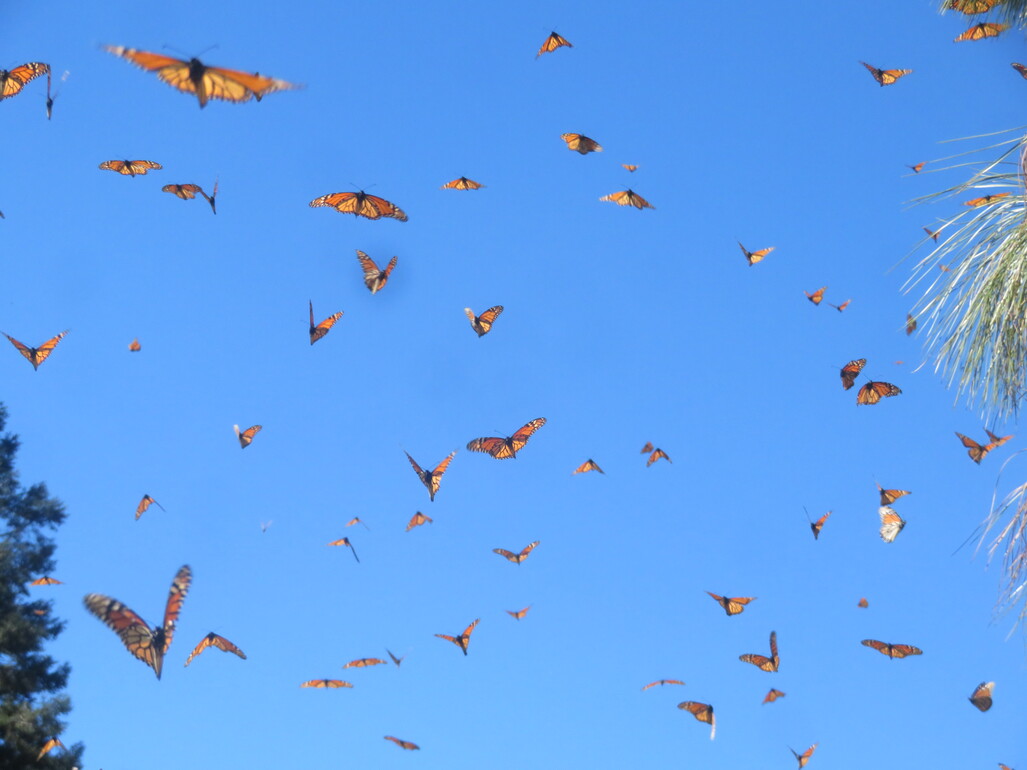
Where I lived, clandestine logging poked holes in the forest canopy that once protected them. The solution seemed easy: my desperately poor neighbors needed alternative sources of income. Yet the more the development projects I spearheaded thrived, the more I found myself in conflict with the family I'd attached myself to. They were only interested in benefiting themselves, not the wider community. And it wasn't just them: I encountered a similar egocentric parochialism at all levels of power in the world of monarch butterfly conservation, where most seemed motivated by self-importance, fear and political expediency, not safeguarding the migration.
In particular, I felt disappointed by the leadership of one of the biggest US-based organizations. Its response to the very complicated issue of preserving the monarch migration was a single talking point: PLANT MILKWEED. In the US Corn Belt, GMO corn and soy crops doused with glyphosates have killed the weeds and wildflowers that used to grow plentifully. Rather than taking on agroindustry, this organization charges individuals with saving the monarch migration by providing more host plants for migrating monarchs.
While planting milkweed is a sound practice in their summer breeding grounds, which stretch from Texas to Ontario, it is not appropriate in their Mexican flyway, where we live. Here the focus should be providing native nectar sources to fuel their journey, not planting milkweed that could tempt them to stay.
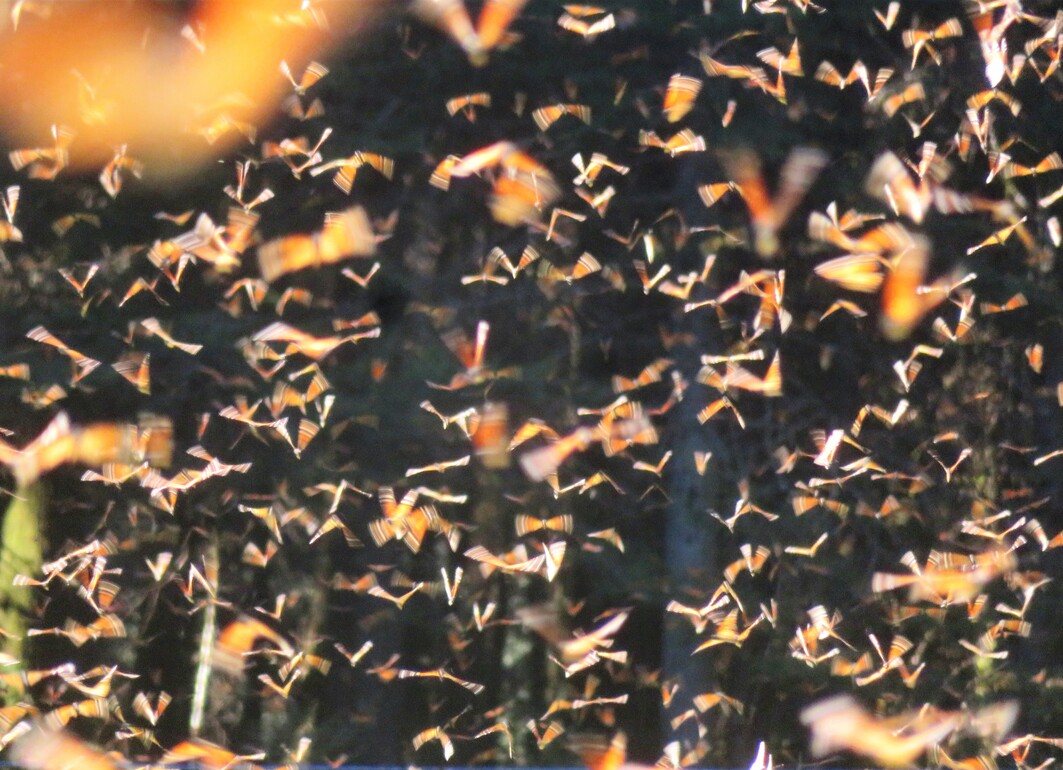
Walking by my San Rafa neighbor's well-trafficked milkweed plant reminded me of my frustration. The one-note talking point reverberated even here, imported by well-meaning expats and returned migrants. I wanted to rip the damn plant out, but I was worried about getting caught destroying my neighbor's tiny piece of nature. Instead, I expressed my displeasure by encouraging my dog to pee there.
One day when I walked by, my neighbor was out tending to his plants. He had the deeply-lined face of a long-time smoker, cigarette clenched in his mouth now that his hands were occupied with emptying a bucket of water into the planter. I hope I started with some kind of pleasantries before I launched into my diatribe. I tried to explain that when migrating monarchs pass through here, they are non-reproductive, they're not supposed to be laying eggs, so they don't need milkweed, what they really need is nectar.
My vecino seemed a bit stunned by the deluge of words pouring out of this unknown güera. I felt like a crazy person, a bit too passionate, perhaps unhinged.
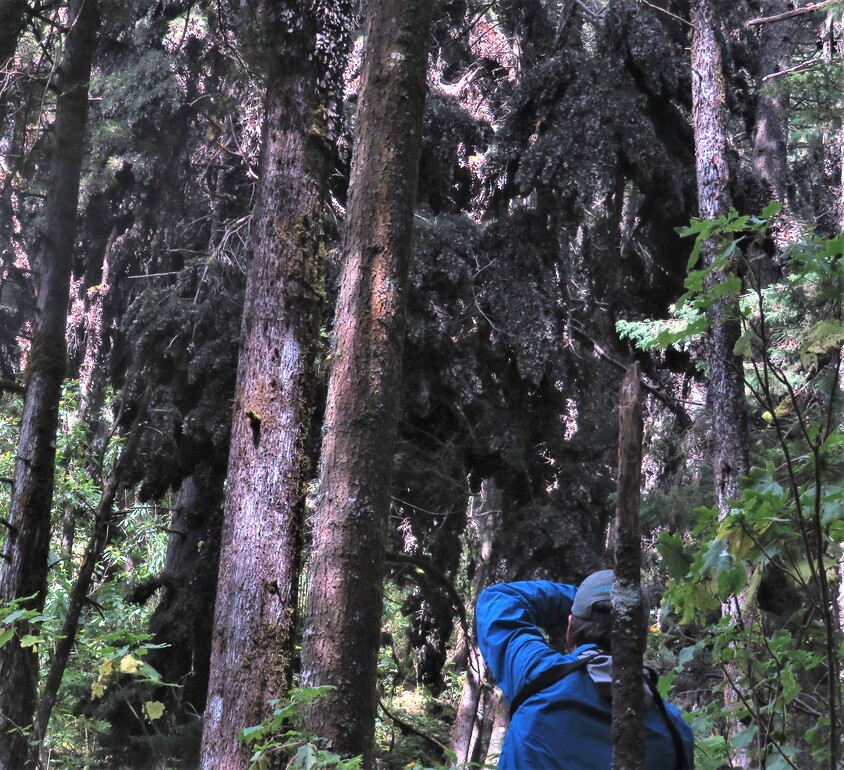
He removed his cigarette from his mouth, exhaling with a shrug. "That's okay," he said, "they can keep coming here for me to enjoy." With that, he walked back into his house with his empty bucket.
It wasn't the first time I'd gotten that kind of reaction to my entreaties here in San Miguel. A Facebook friend I have yet to meet in person proudly posted pictures of all the to: flocking to the milkweed in her Guadiana garden. Upon seeing this gringa's gleeful posts, I sent her a desperate message: "Please stop! I know you think you're helping but you're not." She responded by blocking me.

Milkweed in San Miguel -- photo: Joe Tonelli
*
If there was one thing I learned from my decade in butterfly conservation, it's this: when you're not taking action from a place of healing, it comes out sideways. I knew that before I could speak effectively on this issue, I needed to spend time tending to my own grief. I took a break and retreated. In the meantime, another thing happened: Mexican authorities started speaking out against this misguided conservation practice.
**************

Ellen Sharp is a writer and an IFS-informed therapeutic practitioner specializing in grief and loss. Prior to moving to San Miguel in 2020, she spent a decade developing ecotourism and forest conservation projects at a monarch butterfly sanctuary in rural State of Mexico. She's at work on a memoir about this experience. Sharp holds a PhD in cultural anthropology from UCLA. You can read more about her projects at www.ellensharp.com
**************
*****
Please contribute to Lokkal,
SMA's online collective:
 ***
***
Discover Lokkal:
Watch the two-minute video below.
Then, just below that, scroll down SMA's Community Wall.
Mission

Visit SMA's Social Network
Contact / Contactar

